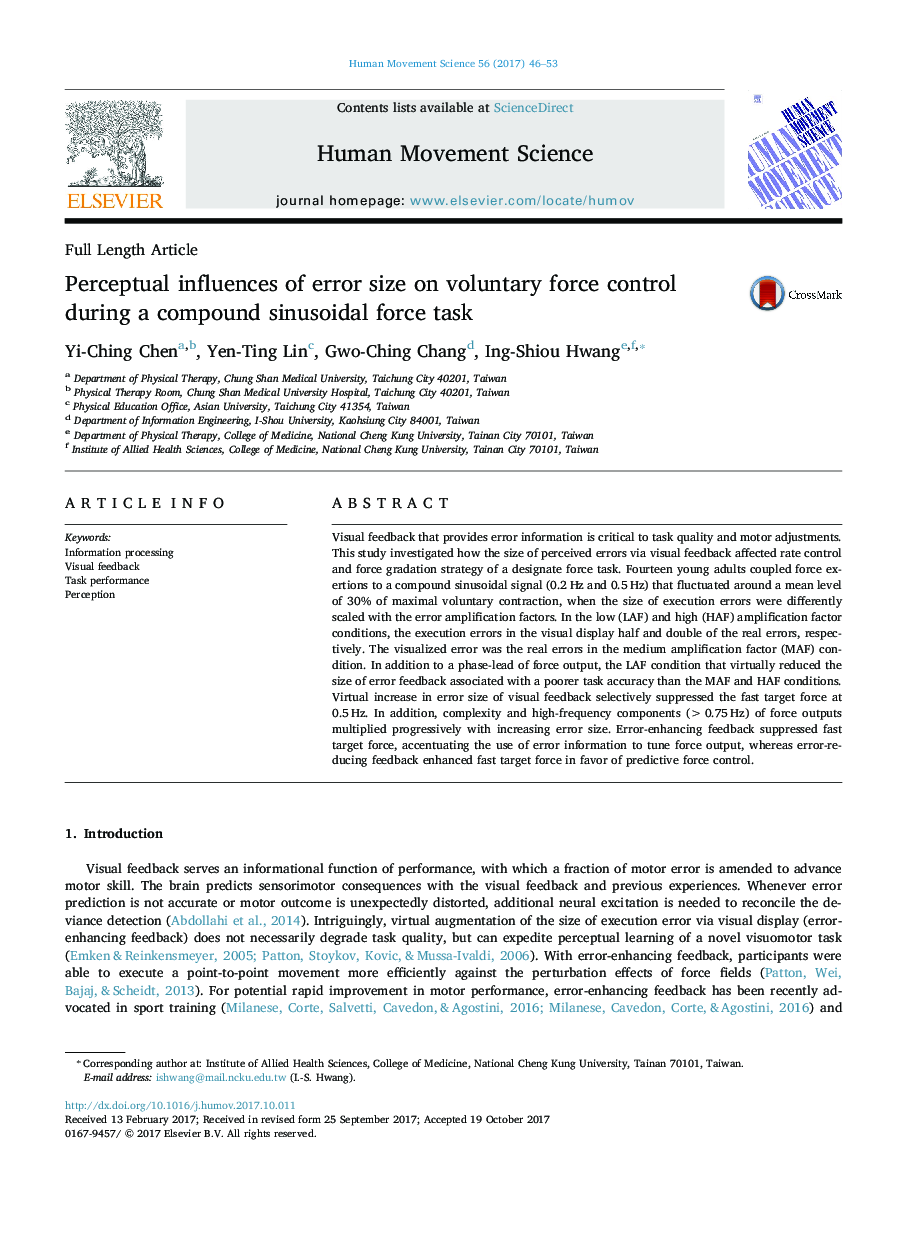| Article ID | Journal | Published Year | Pages | File Type |
|---|---|---|---|---|
| 7290983 | Human Movement Science | 2017 | 8 Pages |
Abstract
Visual feedback that provides error information is critical to task quality and motor adjustments. This study investigated how the size of perceived errors via visual feedback affected rate control and force gradation strategy of a designate force task. Fourteen young adults coupled force exertions to a compound sinusoidal signal (0.2â¯Hz and 0.5â¯Hz) that fluctuated around a mean level of 30% of maximal voluntary contraction, when the size of execution errors were differently scaled with the error amplification factors. In the low (LAF) and high (HAF) amplification factor conditions, the execution errors in the visual display half and double of the real errors, respectively. The visualized error was the real errors in the medium amplification factor (MAF) condition. In addition to a phase-lead of force output, the LAF condition that virtually reduced the size of error feedback associated with a poorer task accuracy than the MAF and HAF conditions. Virtual increase in error size of visual feedback selectively suppressed the fast target force at 0.5â¯Hz. In addition, complexity and high-frequency components (>0.75â¯Hz) of force outputs multiplied progressively with increasing error size. Error-enhancing feedback suppressed fast target force, accentuating the use of error information to tune force output, whereas error-reducing feedback enhanced fast target force in favor of predictive force control.
Related Topics
Life Sciences
Neuroscience
Cognitive Neuroscience
Authors
Yi-Ching Chen, Yen-Ting Lin, Gwo-Ching Chang, Ing-Shiou Hwang,
